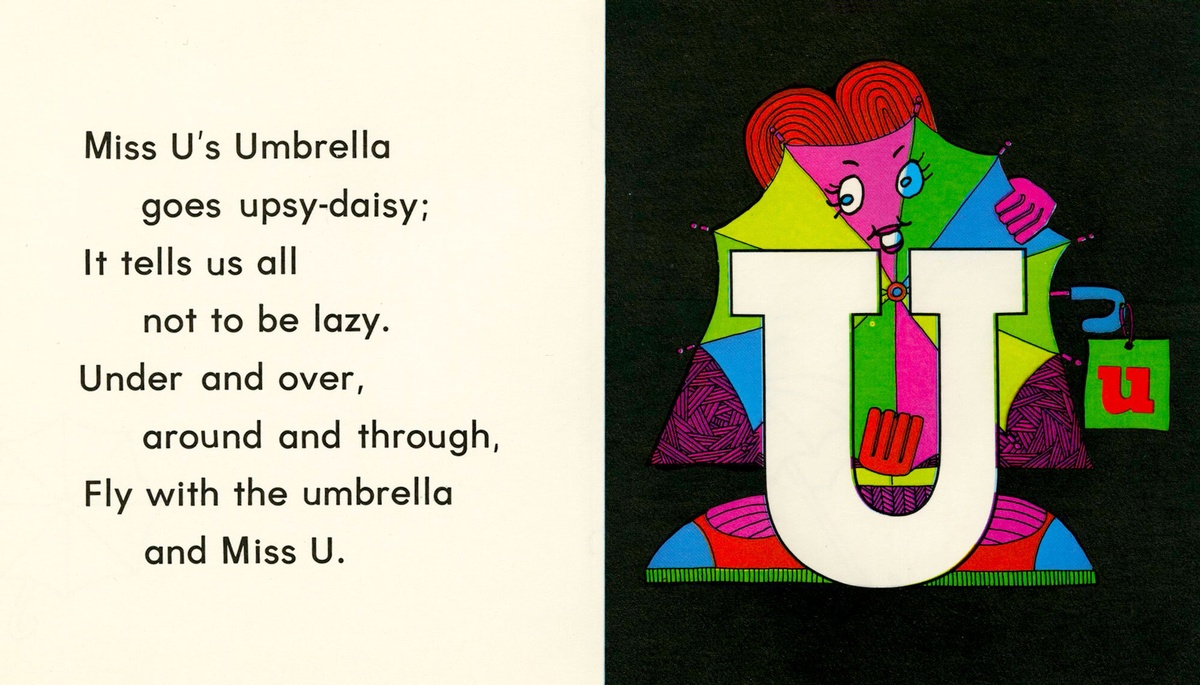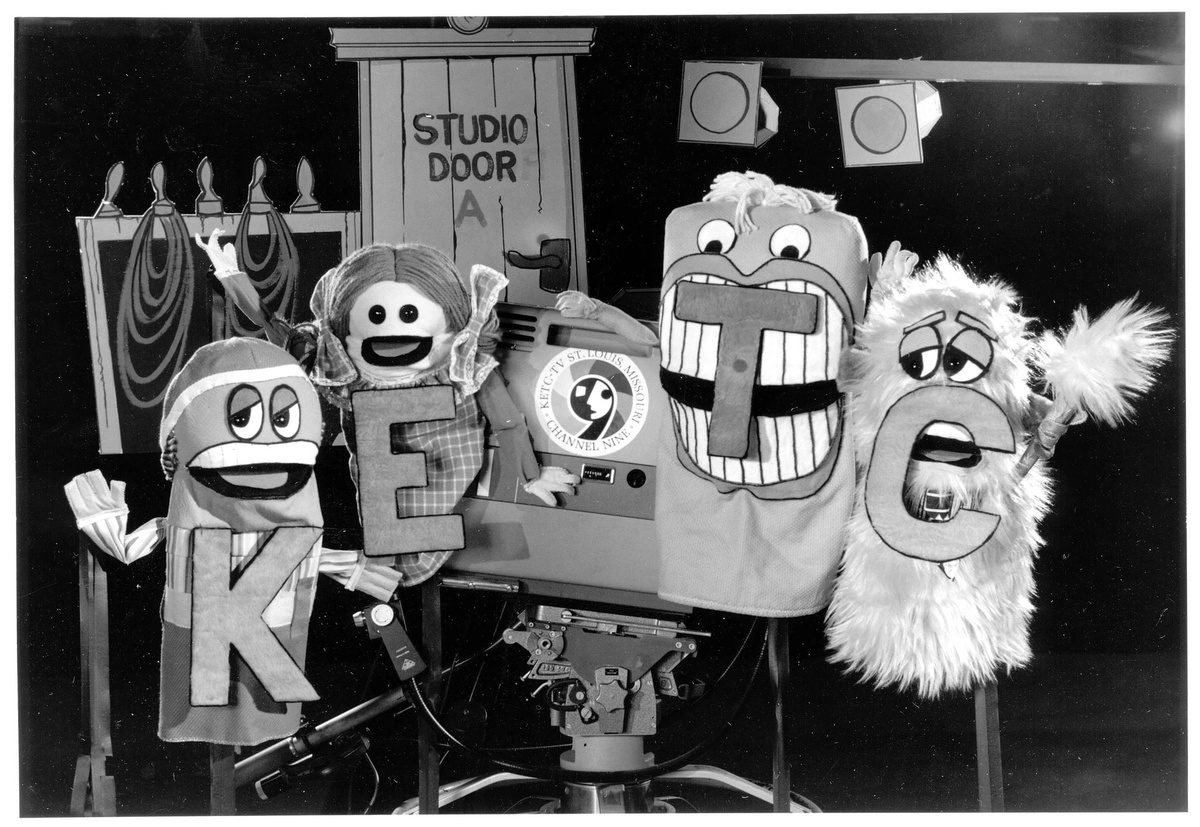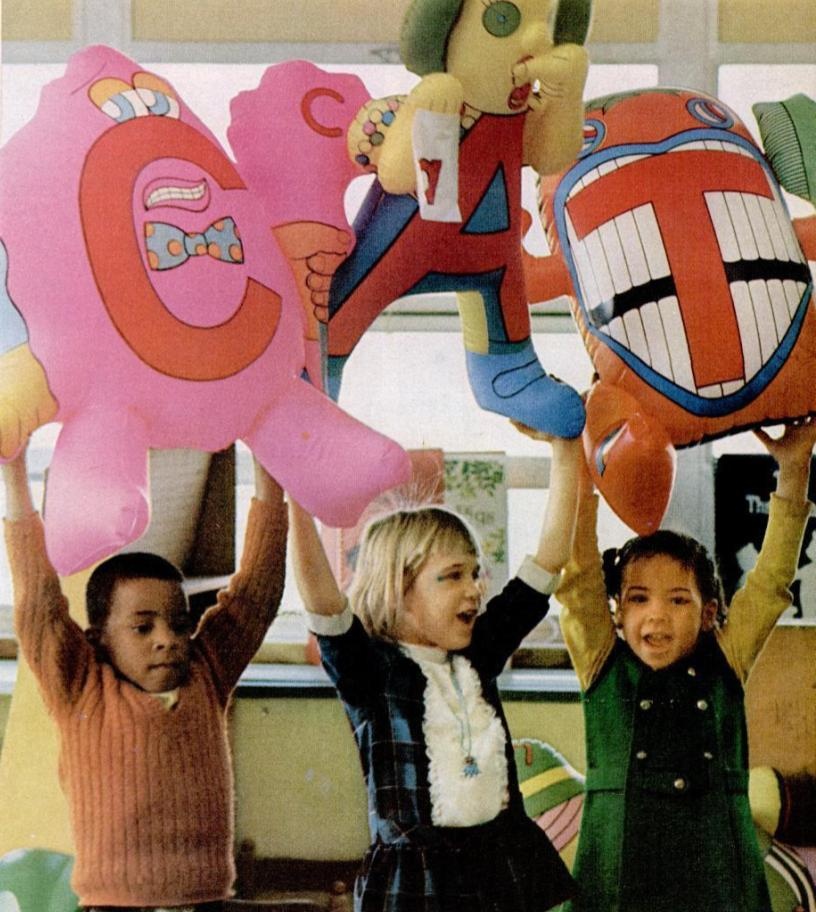For the last year, the shared offices of the Children's Literature Research Collection and the Map Collection have had a consistent litmus test for visitors. When a new visitor enters (either a researcher or a staff member), almost everyone has said one of two things:
1. What are those?
2. You have The Letter People!
I share a kinship with people from the latter category. We're a small group, but one that gets very excited when we discover our commonalities. We've met Mr. M and his munching mouth. We played with Miss E. and her Exercise Energy. We're very familiar with Mr. V and his Violet Velvet Vest. If you know, you know.

The Letter People began with educators Elayne Reiss (b.1933) and Rita Friedman (1922–2011) in the mid-1960s as an idea to promote reading comprehension.1 The program developed by the two reading specialists revolved around 26 anthropomorphic characters representing the letters of the alphabet. Each character had a distinguishing feature that served as a mnemonic device to help children remember the most typical sound represented by that letter. The Letter People were also introduced in a specific order based on how children typically learn sounds.2
Reiss and Freidman created the Letter People through their phonics program Alpha One. After its initial success, Alpha One expanded to include additional educational materials, such as records, activity books, and mass market book series. In 1972, effigies of the characters called "Huggables" were produced for interactive play in classrooms. These Huggables were popular enough that Life Magazine covered their debut. They were also seen on select PBS stations thanks to a series produced by PBS affiliate KETC of St. Louis. (Fair warning: the opening theme song is an earworm!)

The Letter People stayed in production through 2020, although the character design changed considerably.3 In 1990, Abrams and Co. Publishers Inc. purchased the program and revised the characters in 1996. The genders of the characters were changed to make the ratio of males and females more equalized. Previously, only the vowels were identified as "Miss." The honorifics also underwent a subtle change: "Mister" became "Mr." and "Miss" became "Ms." Negative connotations and references to junk food were also changed. Mister L's Lemon Lollipops were replaced by Ms. L and her Longest Laugh while Mister H's Horrible Hair was rebranded as Happy Hair. Most importantly (at least to a library worker), the "quiet" of Mister Q's quiet questions was removed. Quiet questions imply that the question is never asked, and therefore goes unanswered. Children should ask questions — and no one should be embarrassed to learn something new!
The program was purchased in 2019 by Excelligence Learning Corporation. Although new content has not been created since 2020, visitors to Parkway Central Library can relive childhood memories of The Letter People by visiting the exhibition, Spotlight: Objects from Special Collections. The exhibition includes a sampling of books and programming components — including a small Huggable Miss U!
Spotlight will be on view through March 1, 2023.
1 Lehr, F. R. (2009). Abrams Learning Trends: Research Foundations for The Letter People® Programs [White paper]. Abrams & Company Publishers, Inc.
2 Lehr, F. R. (2000). The Sequence of Speech-Sound Acquisition in THE LETTER PEOPLE® Programs [White paper]. Abrams & Company Publishers, Inc.
3 Schmerler, A., Fischer K. M., Lyons, B. et al. (2001). The Letter People® Summer Home Program Family Guide. Abrams & Company Publishers, Inc.
Have a question for Free Library staff? Please submit it to our Ask a Librarian page and receive a response within two business days.

